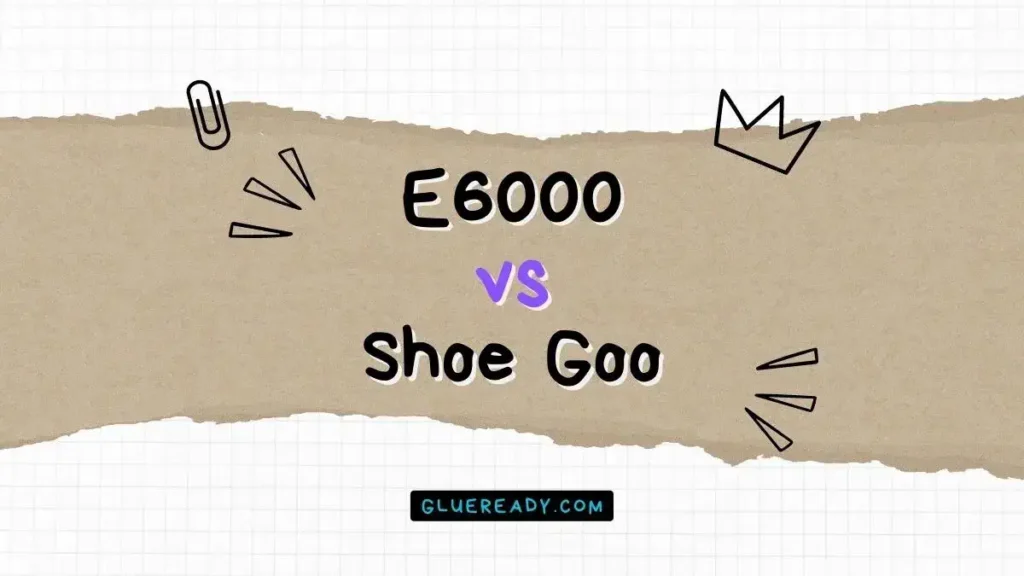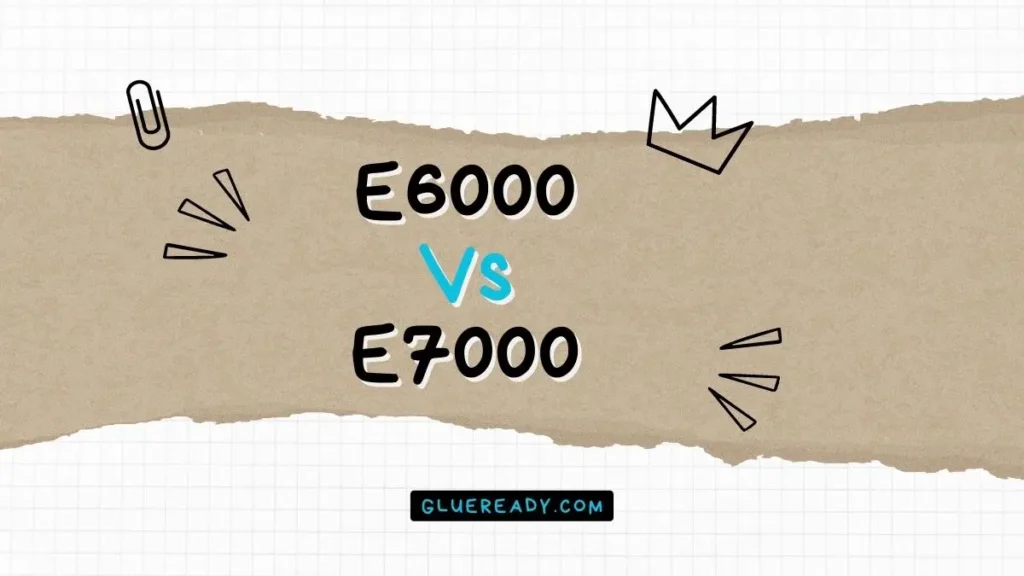Liquid Fusion Glue vs E6000 | In-Depth Comparison

In the world of crafting, DIY projects, and repairs, having a reliable adhesive can make all the difference. Two popular contenders that have gained significant attention are Liquid Fusion Glue and E6000.
Both of these products are popular among crafters, DIYers, and hobbyists, but which one is better for your projects?
In this article, I will compare Liquid Fusion Glue vs E6000 in terms of their features, pros, cons, and applications.
Know More: 527 Glue vs E6000: Which One to Choose?
What is Liquid Fusion Glue?
Liquid Fusion is a clear urethane glue that can bond wood, metal, glass, fabric, ceramic, leather, rubber, plastic, and more.
It is water-resistant, non-toxic, low-odor, and easy to clean up with soap and water. It dries fast and clear, creating a strong and flexible bond that can withstand heat and cold.
Liquid Fusion is ideal for projects that require a durable and invisible glue line.

Liquid Fusion Pros
- Non-toxic and low-odor
- Easy to clean up with soap and water
- Dries fast and clear
- Creates a strong and flexible bond
- Works on many materials
Liquid Fusion Cons
- May not be as strong as E6000 on some materials
- May not fill gaps as well as E6000
- May be more expensive than E6000
What is E6000 Glue?
E6000 is a clear industrial-strength adhesive that can bond wood, metal, glass, fabric, ceramic, leather, rubber, plastic, and more.
It is water-resistant, flexible, paintable, and self-leveling. It has a strong odor and requires ventilation when using.
It dries clear and hard, creating a permanent bond that can withstand heat and cold.
E6000 is ideal for projects that require a heavy-duty and gap-filling glue.

E6000 Pros
- Industrial-strength and permanent
- Self-leveling and gap-filling
- Paintable and flexible
- Works on many materials
E6000 Cons
- Toxic and strong odor
- Requires ventilation when using
- Hard to clean up once cured
- Dries slowly and hard
Liquid Fusion Glue vs E6000 Glue Comparison Table
| Feature | Liquid Fusion Glue | E6000 Glue |
| Color | Clear | Clear |
| Type | Urethane glue | Industrial-strength adhesive |
| Drying Time | Fast (sets in 2-4 hours, cured in 24 hours) | Slow (cured in 24-72 hours) |
| Odor | Low | Strong |
| Toxicity | Non-toxic | Toxic |
| Self-leveling | No | Yes |
| Compatible Materials | Metal, plastic, glass, ceramic, fiber, stone, wood, and more | Wood, leather, metal, rubber, plastic, vinyl, and more |
| Flexibility | Rigid and strong | Flexible and self-leveling |
How To Choose Between Liquid Fusion Glue and E6000 Glue?
Choosing between Liquid Fusion Glue and E6000 Glue depends on several factors. To make an informed decision, consider the following aspects:
Material Type
Identify the materials you plan to bond. If your project involves porous materials like fabric, foam, or wood, Liquid Fusion Glue is a suitable option.
For a broader range of materials, including non-porous surfaces like glass, metal, or plastic, E6000 Glue may be the better choice.
Bonding Strength
Assess the strength required for your project. If you need a moderate bond for lightweight crafts and repairs, Liquid Fusion Glue will suffice.
However, if your project demands a strong and durable bond, especially for load-bearing applications or heavy-duty repairs, E6000 Glue’s superior bonding strength is ideal.
Application Timeframe
Consider your time constraints. Liquid Fusion Glue generally has a quicker drying time, allowing you to complete projects faster.
On the other hand, E6000 Glue may take longer to dry and fully cure, which could extend the project completion time.
Odor and Toxicity
Take into account the environment in which you’ll be working. Liquid Fusion Glue is odorless and non-toxic, making it suitable for indoor use and projects around children.
Conversely, E6000 Glue emits a strong odor and contains harsh chemicals, requiring proper ventilation and careful handling during application.
Flexibility Requirement
Determine if your project requires flexibility in the bonded materials.
E6000 Glue retains its flexibility once cured, making it ideal for items that undergo frequent movement or bending.
Liquid Fusion Glue has a moderate flexibility level in comparison.
Resistance to Environmental Factors
Evaluate whether your project will be exposed to varying environmental conditions.
E6000 Glue excels in resisting water, heat, and cold, making it ideal for outdoor applications.
Liquid Fusion Glue has moderate resistance to environmental factors.
Indoor/Outdoor Use
Determine whether your project will be primarily indoors or outdoors.
Liquid Fusion Glue is better suited for indoor applications, while E6000 Glue can be used both indoors and outdoors due to its superior resistance to environmental elements.
Know More: Fabric Glue vs Sewing: Which One is Better?
Frequently Asked Questions (FAQs)
Is Liquid Fusion Permanent?
Yes, Liquid Fusion is a permanent adhesive. Once it has cured, it forms a strong bond that is waterproof and can be used for both indoor and outdoor projects.
What Is Liquid Fusion Good For?
Liquid Fusion Glue is great for bonding porous surfaces and is easy to clean up.
Does Liquid Fusion Work on Plastic?
Yes, Liquid Fusion can be used on plastic surfaces. It is a versatile adhesive that can bond to a variety of surfaces, including plastic.
How Long Does Liquid Fusion Glue Take to Dry?
Liquid Fusion takes 2 to 4 hours to set and around 24 hours to cure and hold properly.
Final Thoughts
Liquid Fusion and E6000 are both great glues that can bond different materials.
Liquid Fusion is better for projects that require a non-toxic, fast-drying, flexible glue that is easy to clean up.
E6000 is better for projects that require a heavy-duty glue that can fill gaps and withstand harsh conditions.
At the end of the day, it really boils down to your personal preference and the project you’re working on. Hopefully, this comparison between Liquid Fusion Glue vs E6000 glue will help you with that.






